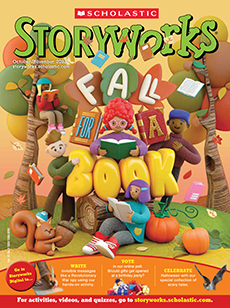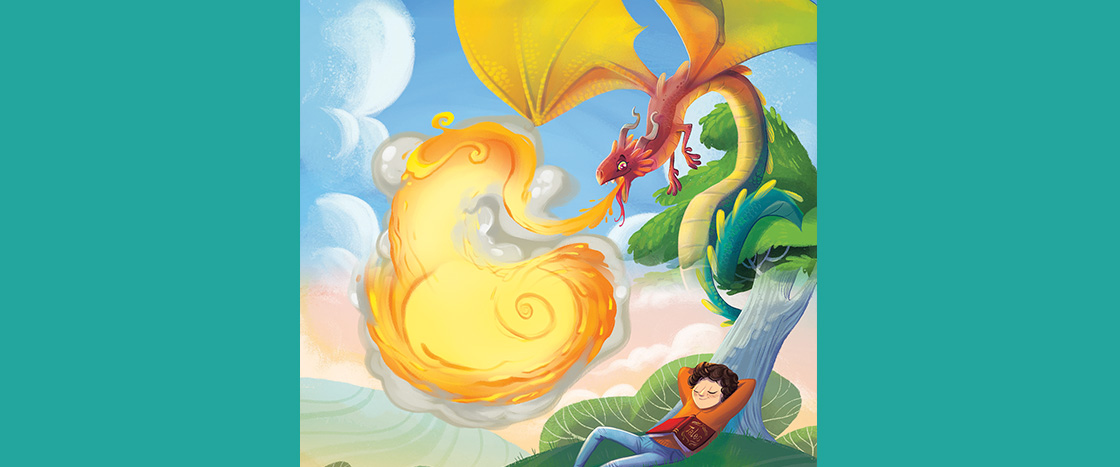Close your eyes.
See a rickety old bridge before you,
cobwebs glistening in the early morning mist.
Slowly, carefully, cross over the bubbling stream.
Crunch along the leaf-strewn path up under the trees,
all burnt orange, amber and crimson.
Come out in a vast meadow on a golden hillside.
See, towering above you, a great mountain.
Swish through the long grasses to a small, wooden gate.
Open the gate and slowly, carefully, one step at a time,
make your way up the steep, rocky track
that winds around that great mountain,
until you reach the gaping mouth of a cave.
Tiptoe silently inside.
Wait, for your eyes to adjust to the dim light.
What is that shadowy heap
sprawled at the back of the cave,
wreathed in a thin veil of smoke?
It is the dragon, most majestic, most magical of beasts.
Hear the deep, rumbling thunder of a dragon asleep.
Breathe the sharp scent of burning.
See the sparks that, for an instant,
light up the whole cave with each outward breath.
Catch a glimpse of the glittering, jewel-encrusted scaly skin;
the long, strong, ridged tail; the claws.
Do not move.
Slowly, carefully, when you are ready,
open your eyes.
Remember the dragon.

